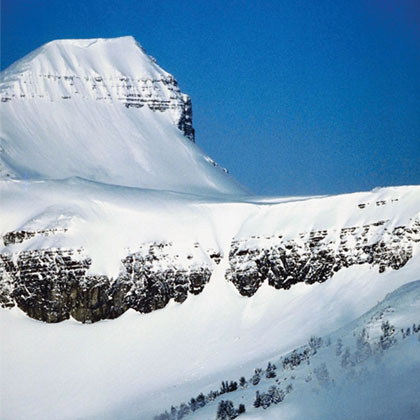
The catastrophic processes during and following the Genesis Flood continue to amaze and challenge geologists and geophysicists. Mountain building, faulting, and other geologic processes are believed by the conventional scientific community to have occurred over millions of years. But evidence continues to mount that many massive geologic processes have occurred in months, days, and even minutes. For example, the rapid movement of large blocks of limestone for distances of up to 50 miles has recently come under scrutiny by scientists of the Flood Activated Sedimentation and Tectonics (FAST) program.
Most faults show the displacement of rock for tens of feet or less. However, much larger displacements of rock for many miles have come to be called superfaults. They require catastrophic explanations. The Heart Mountain detachment fault in northwestern Wyoming near Yellowstone National Park is the largest continental rockslide known on earth. This mass of rock, more than 400 square miles in area and over 1,000 feet thick, moved rapidly down a slope of less than 2 degrees at an estimated speed of 50 miles per hour. Because of the weight of such a large block of rock and its rapid movement, it has been an enigma to geologists for years. What processes could have reduced friction on the underlying surface sufficiently to allow sliding at such a low angle without deforming the lower surface? Could the rock have melted to form a thin layer of liquid or gas?
Recent research by both secular and creationist scientists has focused on an unusual layer of rock found in superfaults that has properties that argue for catastrophic emplacement. This thin layer of rock in the fault contains melted glassy minerals that indicate temperatures exceeded 1000°C and vaporized the limestone when it slipped. Similar glassy minerals have previously been found in craters where large meteors struck the earth at high velocities and melted basaltic rock at high temperatures. The amazing irony of Heart Mountain is that uniformitarian geologists who believe in millions of years of earth history and slow, gradual processes are being forced by the evidence to recognize catastrophic process.
Members of the FAST group conducted field surveys in the summer of 2008 near Heart Mountain to document and explore the evidence for catastrophic emplacement of faults in the area. They mapped the South Fork detachment fault to the south of the Heart Mountain detachment fault and collected rock samples. Although much of this fault is inaccessible because it is buried underground, there are several locations where it is exposed at the surface. The fault at these locations is being studied in detail and samples of the minerals in the fault collected for laboratory analyses.
Plans are also being made to numerically simulate the superfaults in the Heart Mountain region and illustrate their movement under catastrophic conditions following the Genesis Flood. Dr. Steve Austin, who manages the FAST program under contract to ICR, has studied the Heart Mountain detachment fault for several years and is excited about its potential as an argument for a young earth and a catastrophic Flood.
* Dr. Vardiman is Chair of the Department of Astro/Geophysics.
Cite this article: Vardiman, L. 2008. Sleuthing Superfaults. Acts & Facts. 37 (11): 6.
















